-
 Bitcoin
Bitcoin $117500
2.15% -
 Ethereum
Ethereum $3911
6.19% -
 XRP
XRP $3.316
10.79% -
 Tether USDt
Tether USDt $1.000
0.01% -
 BNB
BNB $787.2
2.24% -
 Solana
Solana $175.2
4.15% -
 USDC
USDC $0.9999
0.00% -
 Dogecoin
Dogecoin $0.2225
8.40% -
 TRON
TRON $0.3383
0.28% -
 Cardano
Cardano $0.7868
6.02% -
 Stellar
Stellar $0.4382
9.34% -
 Hyperliquid
Hyperliquid $40.92
7.56% -
 Sui
Sui $3.764
7.63% -
 Chainlink
Chainlink $18.48
10.66% -
 Bitcoin Cash
Bitcoin Cash $582.1
1.88% -
 Hedera
Hedera $0.2601
6.30% -
 Avalanche
Avalanche $23.33
4.94% -
 Ethena USDe
Ethena USDe $1.001
0.02% -
 Litecoin
Litecoin $122.3
2.04% -
 UNUS SED LEO
UNUS SED LEO $8.969
-0.27% -
 Toncoin
Toncoin $3.339
0.86% -
 Shiba Inu
Shiba Inu $0.00001287
4.30% -
 Uniswap
Uniswap $10.43
7.38% -
 Polkadot
Polkadot $3.861
5.08% -
 Dai
Dai $1.000
0.02% -
 Bitget Token
Bitget Token $4.513
3.41% -
 Monero
Monero $267.7
-6.18% -
 Cronos
Cronos $0.1499
4.14% -
 Pepe
Pepe $0.00001110
5.15% -
 Aave
Aave $284.9
8.28%
What are the characteristics of Solana's NFT market?
Solana's thriving NFT market boasts rapid growth, low transaction fees, fast transaction times, and innovative features, attracting creators and collectors alike.
Feb 17, 2025 at 01:06 am
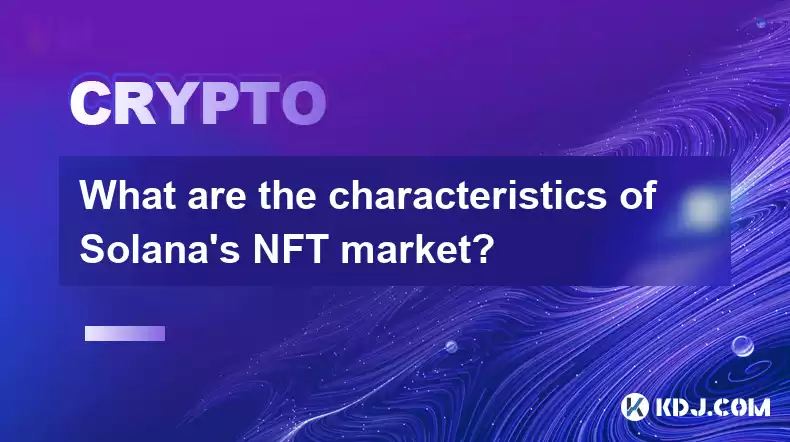
Key Points:
- Solana's NFT market is rapidly expanding, with significant growth in sales volume and transaction count.
- The low transaction fees and fast transaction times on Solana make it an attractive platform for NFT creators and collectors.
- Solana's unique features, such as its high scalability and interoperability, enable the development of innovative NFT applications.
Characteristics of Solana's NFT Market:
1. Rapid Growth:
Solana's NFT market has experienced explosive growth in recent months. The total sales volume of NFTs on Solana has surpassed $2 billion, and the number of active wallets participating in NFT transactions has increased significantly.
2. Low Transaction Fees:
One of the key advantages of Solana for NFT creators is the low transaction fees. Solana's Layer-1 blockchain uses a consensus mechanism that allows for fast and inexpensive transactions. Typically, transaction fees on Solana are around a fraction of a cent, making it much more cost-effective to mint and trade NFTs compared to other blockchains.
3. Fast Transaction Times:
Solana's high transaction speed is another major attraction for NFT users. The Solana blockchain can process over 65,000 transactions per second, enabling near-instantaneous NFT transactions. This speed is crucial for applications that require real-time NFT settlement, such as gaming and metaverse projects.
4. High Scalability:
Solana's scalability allows it to handle a large volume of NFT transactions without experiencing congestion or delays. The blockchain's ability to scale enables the development of NFT marketplaces and applications that cater to a growing user base.
5. Interoperability:
Solana's interoperability with other blockchains allows NFT creators to access a wider audience. NFT projects can be built on Solana and easily ported to other compatible blockchains, enabling cross-chain compatibility and liquidity.
6. Developer-Friendly:
Solana's blockchain provides a developer-friendly environment for building NFT projects. Its Rust programming language and software development kit (SDK) offer robust tools and resources for creating and customizing NFT applications.
7. Community Support:
Solana's community is actively engaged in the development and growth of the NFT ecosystem. Numerous NFT projects, marketplaces, and communities are emerging on Solana, supporting the platform's adoption and innovation.
FAQs:
What is Solana's main competitor in the NFT market?
Solana's main competitor in the NFT market is Ethereum. Ethereum has a larger established NFT ecosystem, but Solana offers advantages in transaction speed, cost, and scalability.
What is the most popular NFT marketplace on Solana?
Magic Eden is the most popular NFT marketplace on Solana, accounting for a significant share of NFT sales on the platform. Magic Eden offers a user-friendly interface, various payment options, and a range of NFT collections.
What are some of the unique NFT projects on Solana?
Notable NFT projects on Solana include DeGods, Okay Bears, Solana Monkey Business, and Aurory. These projects have established strong communities, innovative artwork, and utility within their respective ecosystems.
How do I get started with NFTs on Solana?
To get started with NFTs on Solana, you will need a Solana wallet such as Phantom or Solflare. You can purchase NFTs on marketplaces like Magic Eden or Solanart using SOL, the native cryptocurrency of the Solana blockchain.
Disclaimer:info@kdj.com
The information provided is not trading advice. kdj.com does not assume any responsibility for any investments made based on the information provided in this article. Cryptocurrencies are highly volatile and it is highly recommended that you invest with caution after thorough research!
If you believe that the content used on this website infringes your copyright, please contact us immediately (info@kdj.com) and we will delete it promptly.
- Tron's Sell-Off Spurs Altcoin Shift: What's Next for TRX?
- 2025-08-08 08:30:12
- RUVI Presale: Is the Growth Potential Real?
- 2025-08-08 09:10:12
- Sleep Token's US Takeover: Thornhill Rides the 'Even In Arcadia' Wave
- 2025-08-08 08:30:12
- FTT Token's Wild Ride: Creditor Repayments vs. Market Drop - A New Yorker's Take
- 2025-08-08 07:10:12
- Floki Crypto Price Prediction: Riding the Robinhood Rocket or Just a Meme?
- 2025-08-08 07:15:12
- EigenLayer, Restaking, and Ethereum: Navigating the Hype and the Hazards
- 2025-08-08 06:30:12
Related knowledge

Where can I buy UMA (UMA)?
Aug 07,2025 at 06:42pm
Understanding UMA and Its Role in Decentralized FinanceUMA (Universal Market Access) is an Ethereum-based decentralized finance (DeFi) protocol design...
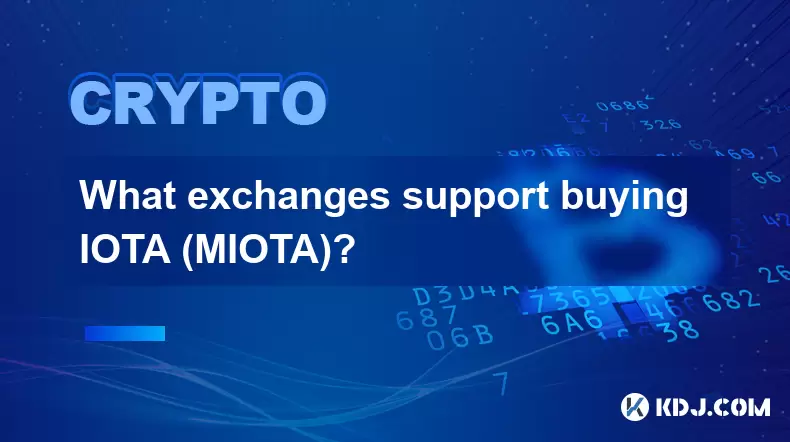
What exchanges support buying IOTA (MIOTA)?
Aug 07,2025 at 09:58pm
Understanding the Role of Private Keys in Cryptocurrency SecurityIn the world of cryptocurrency, private keys are the cornerstone of ownership and con...
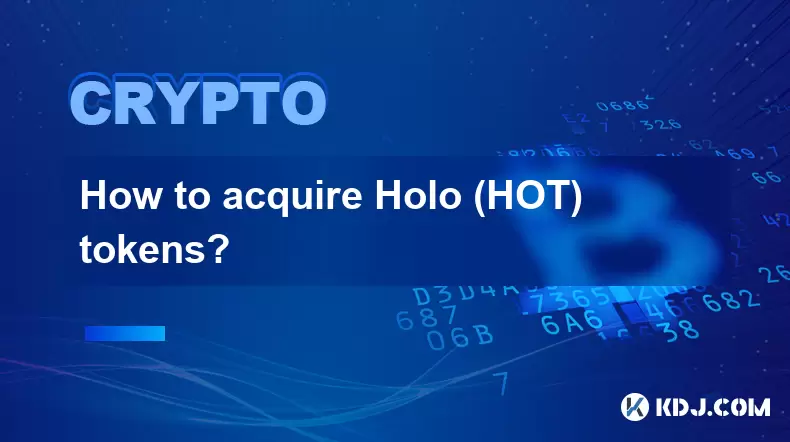
How to acquire Holo (HOT) tokens?
Aug 08,2025 at 05:56am
Understanding Holo (HOT) and Its EcosystemHolo (HOT) is a cryptocurrency token associated with the Holo ecosystem, which is built on the Holochain fra...
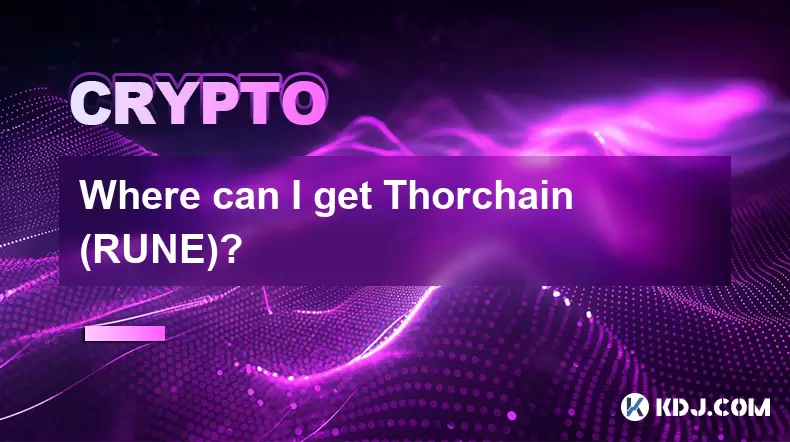
Where can I get Thorchain (RUNE)?
Aug 08,2025 at 08:07am
Understanding the Role of Seed Phrases in Cryptocurrency WalletsA seed phrase, also known as a recovery phrase or mnemonic phrase, is a critical compo...
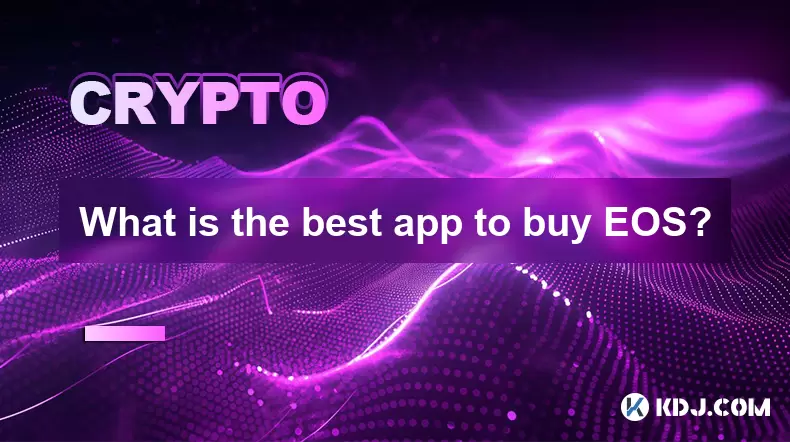
What is the best app to buy EOS?
Aug 07,2025 at 04:35pm
Understanding EOS and Its Role in the Cryptocurrency EcosystemEOS is a blockchain platform designed to support decentralized applications (dApps) with...
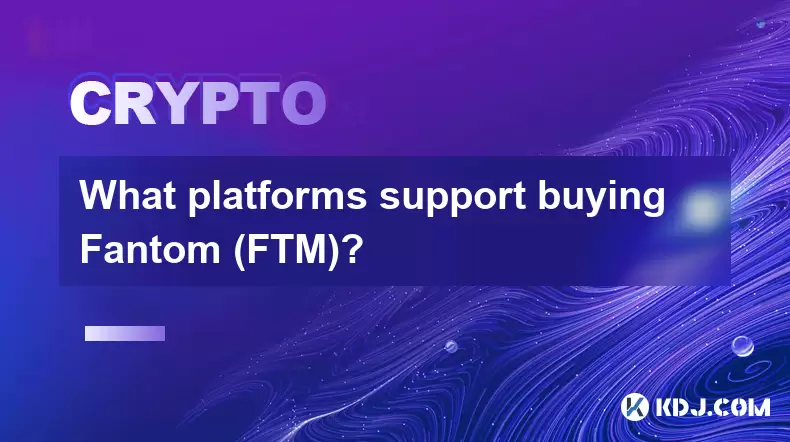
What platforms support buying Fantom (FTM)?
Aug 08,2025 at 01:56am
Overview of Fantom (FTM) and Its EcosystemFantom (FTM) is a high-performance, scalable, and secure layer-1 blockchain designed to overcome the limitat...

Where can I buy UMA (UMA)?
Aug 07,2025 at 06:42pm
Understanding UMA and Its Role in Decentralized FinanceUMA (Universal Market Access) is an Ethereum-based decentralized finance (DeFi) protocol design...

What exchanges support buying IOTA (MIOTA)?
Aug 07,2025 at 09:58pm
Understanding the Role of Private Keys in Cryptocurrency SecurityIn the world of cryptocurrency, private keys are the cornerstone of ownership and con...

How to acquire Holo (HOT) tokens?
Aug 08,2025 at 05:56am
Understanding Holo (HOT) and Its EcosystemHolo (HOT) is a cryptocurrency token associated with the Holo ecosystem, which is built on the Holochain fra...

Where can I get Thorchain (RUNE)?
Aug 08,2025 at 08:07am
Understanding the Role of Seed Phrases in Cryptocurrency WalletsA seed phrase, also known as a recovery phrase or mnemonic phrase, is a critical compo...

What is the best app to buy EOS?
Aug 07,2025 at 04:35pm
Understanding EOS and Its Role in the Cryptocurrency EcosystemEOS is a blockchain platform designed to support decentralized applications (dApps) with...

What platforms support buying Fantom (FTM)?
Aug 08,2025 at 01:56am
Overview of Fantom (FTM) and Its EcosystemFantom (FTM) is a high-performance, scalable, and secure layer-1 blockchain designed to overcome the limitat...
See all articles

























































































